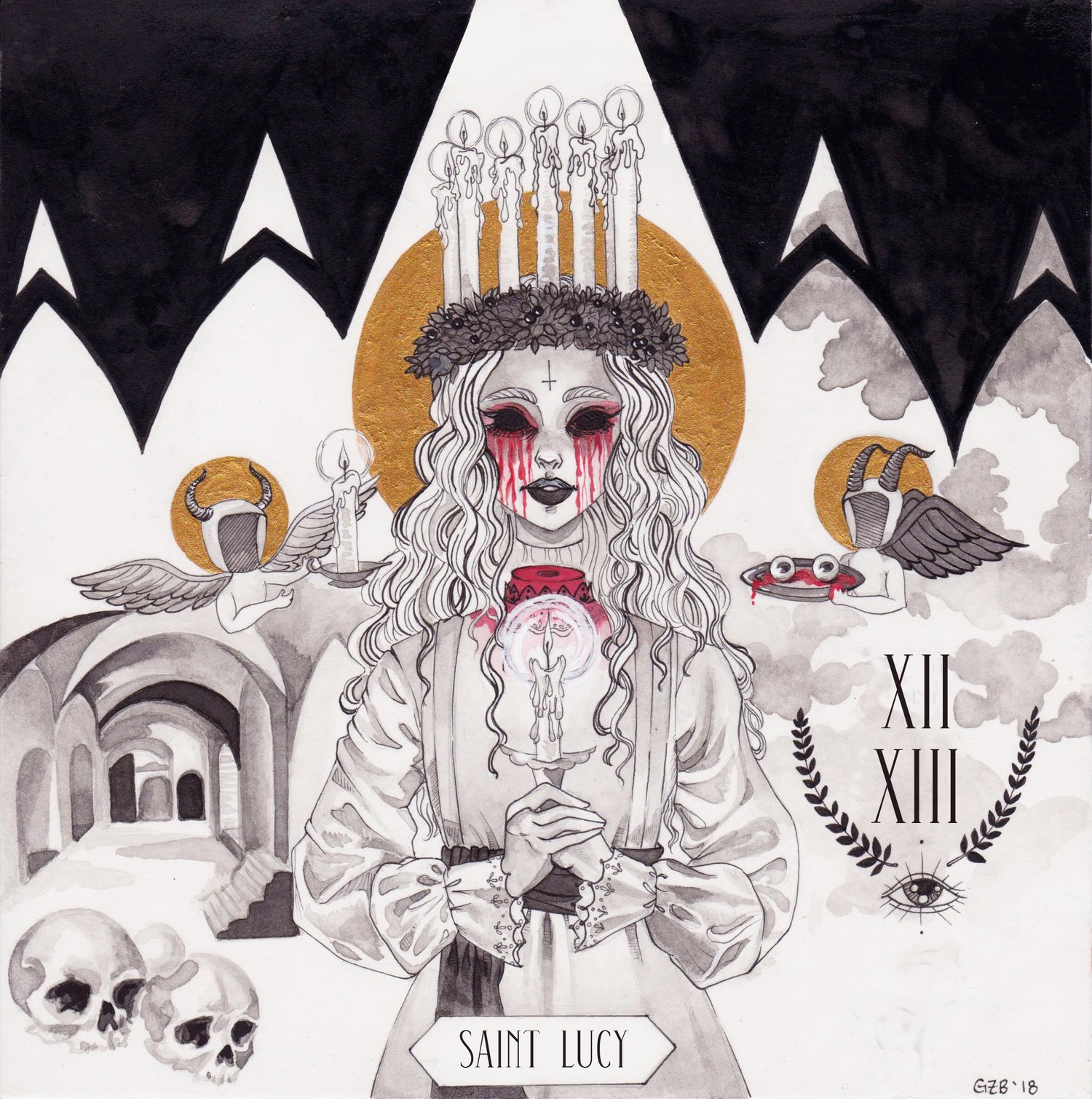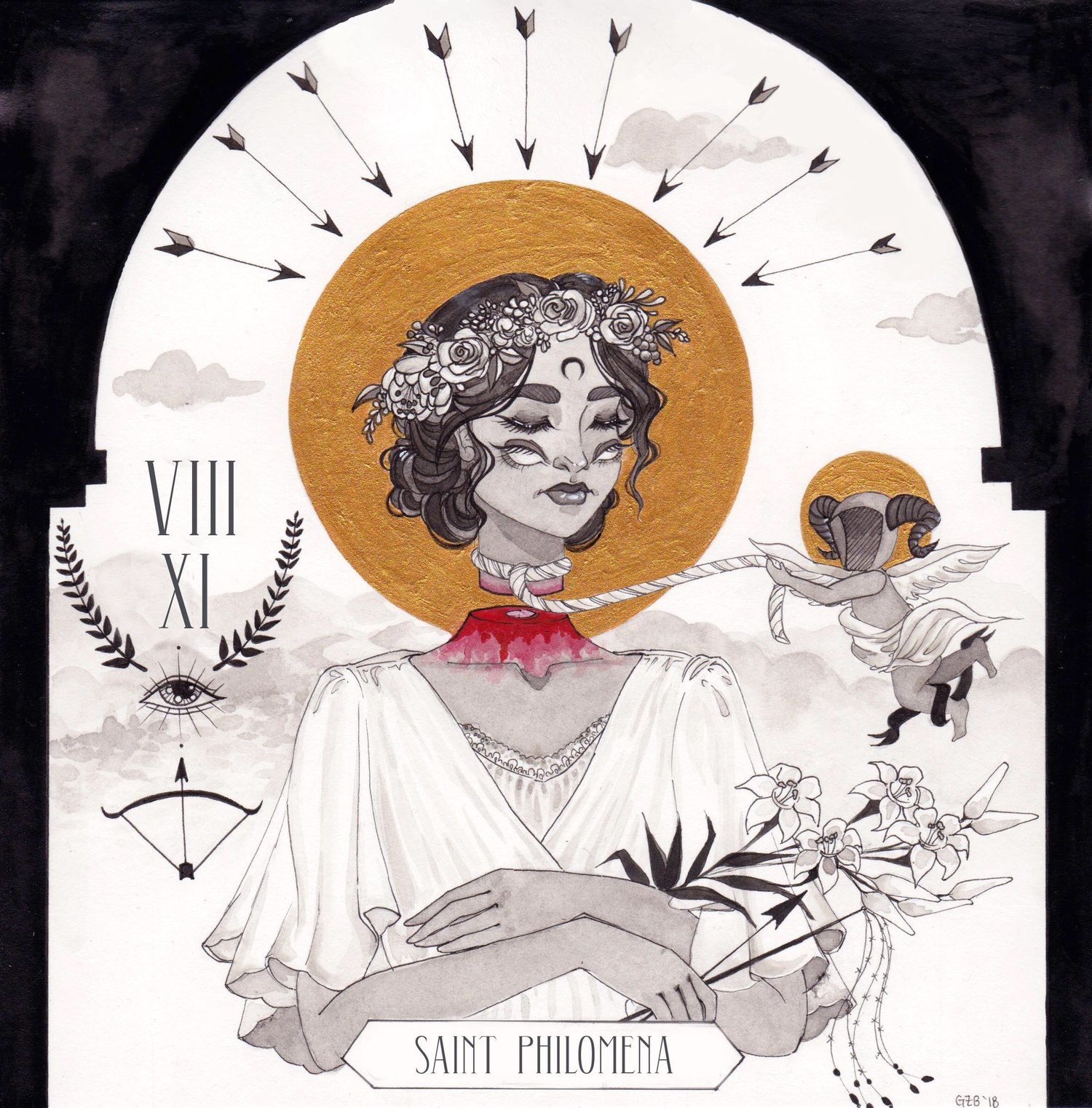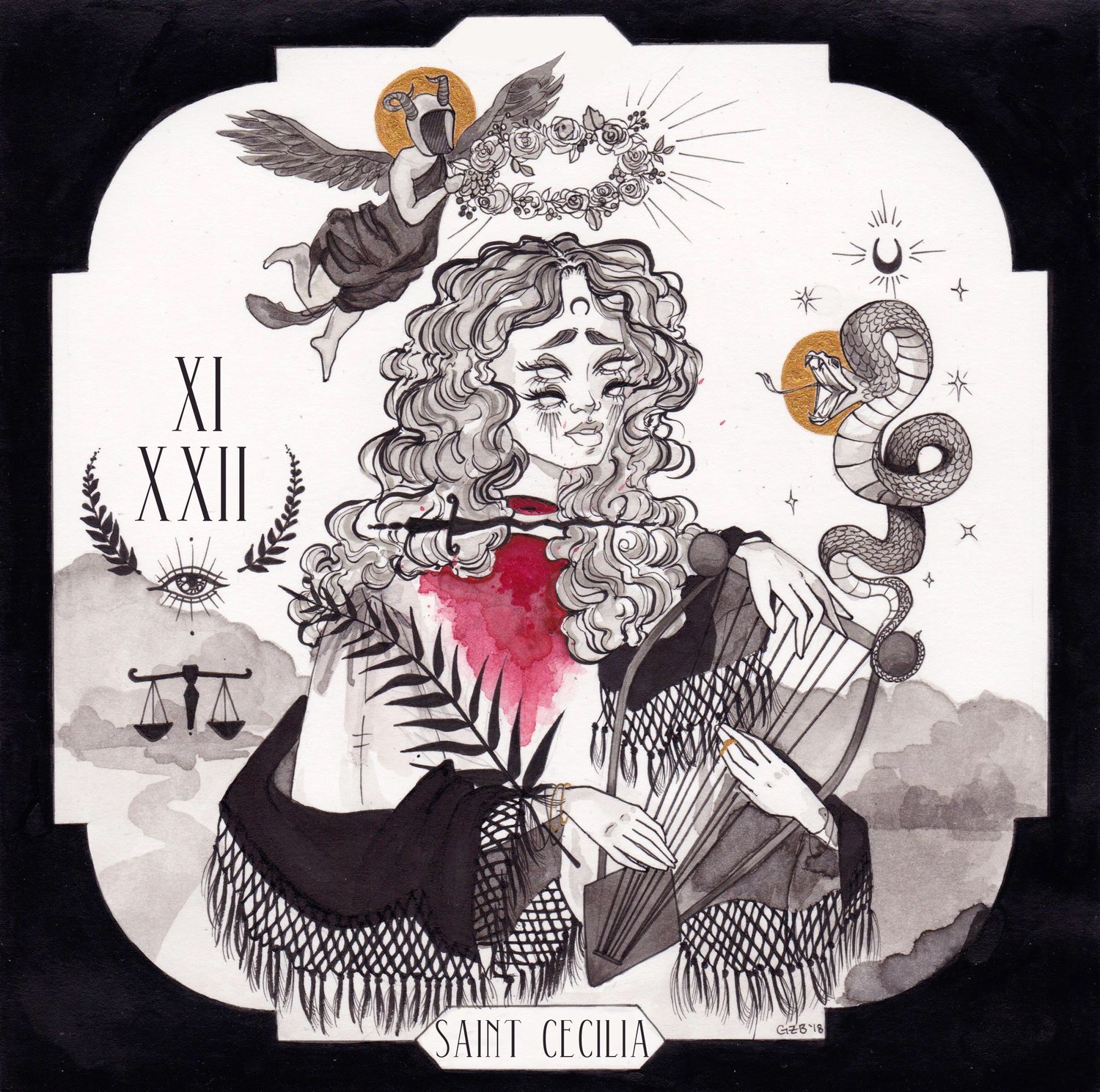b
Saintesses by Sad Riot
These are lovely interpretations of four female saints by Sad Riot: Lucy whose emblem is eyes on a golden plate, her eyes having been taken out; Philomena the virgin martyr who underwent numerous torments, scourging, drowning, being shot by arrows (and was finally decapitated), rather than become the Emperor Diocletian’s wife; Maria Goretti the eleven-year-old child, stabbed fourteen times with an awl; and Cecilia, who lived for three days after being struck on the neck three times with a sword.



